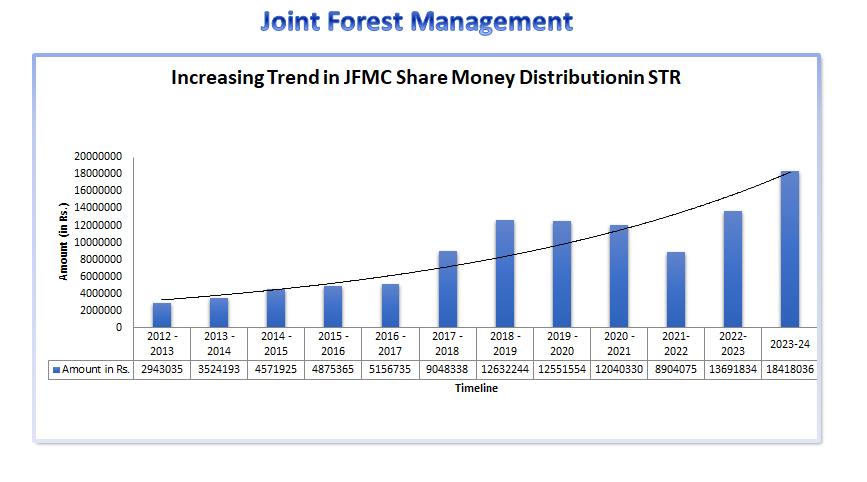

India has a long history of co-existence of people and the wild so that there is space for both to thrive in harmony.The oldest examples are the sacred groves, which are an indigenous community approach for protecting patches of forests for a variety of ecosystem services. Many communities have historically protected local forests. Joint Forest Management (JFM) is an approach and programme initiated in the context of the National Forest Policy of 1988 wherein state forest departments support local forest dwelling and forest fringe communities to protect and manage forests and share the costs and benefits from the forests with them. JFM has the potential to meet local subsistence needs, of fuel wood, fodder, other non-timber forest produce (NTFP) etc., to provide livelihood through sale of produce, while at the same time, preventing degradation of the forests that provide local, nationaland global environmental benefits
26 JFMC are active for Wildlife wing in various locations. Both male and female participants are actively in involved in the administration and decision making of access and benefit sharing of the available resources. The following resources are managed and sustainably utilised from the forests of the Sundarban Tiger Reserve Buffer areas providing livelihood opportunities to the JFMC members-
The benefits to the inhabitants is direct access and control on the use and sale of most NTFPs and a share in the income from forest products as well as other intangible benefits from local ecosystem services – like water recharge, pollination, wildlife habitat etc. Thus association of communities in conservation of forests and wildlife is of paramount interest.

